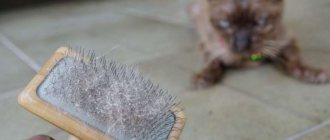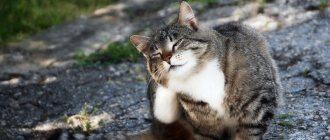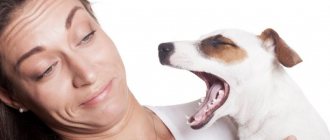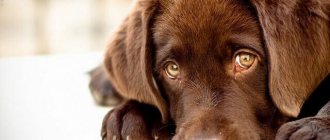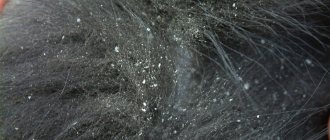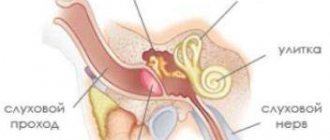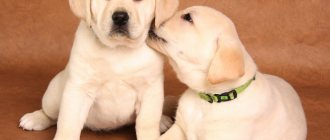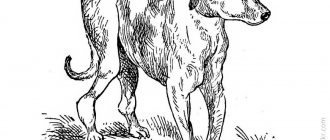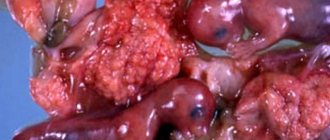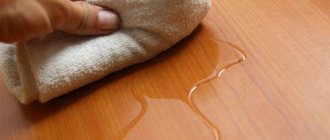For a responsible owner, examining your pet and combing its “fur coat” is a mandatory procedure. This is the only way to notice in time that the condition of the animal’s skin has worsened, and crumbly scales have appeared on the fur. This means that the dog has dandruff. Not a rare occurrence in our environment.
Many people think that dandruff only affects the dog’s appearance, but in reality, it is a direct reflection of problems in the body’s functioning. Therefore, it is imperative to find out the reason for such changes and take appropriate action. In this article we will figure out how to do this.
Types of dandruff, symptoms and causes
Dandruff is flaking particles of the upper layer of the epithelium (skin). This phenomenon in itself is not a disease, and the cause of its appearance may be completely harmless and easily correctable, but it can also be quite the opposite.
Common causes of dandruff include:
- Vitamin deficiency, especially vitamin A deficiency.
- An unsuitable shampoo can negatively affect the condition of the skin and coat, and sometimes cause allergies. Don't trust cheap products.
- The air in the room where the dog lives is too dry and stuffy. It also affects the condition of the dermis (skin).
- Shedding. During this period, there is a change not only in fur, but also in the upper layers of the epithelium. So dandruff is normal. You just need to carefully care for your dog during this time, and, if necessary, include vitamin supplements in the diet.
- Insufficient care. If you don't brush your dog and don't wash him when necessary, then be prepared for the consequences, and the appearance of dandruff is the lesser of two evils.
- Helminths.
However, each case must be considered individually. By the definition of “Dandruff”, people mean completely ambiguous symptoms. Below we will look at what you may encounter, in addition to ordinary dandruff.
Wandering Dandruff or Cheyletiellosis
This is a parasitic disease caused by Cheyletiella mites. They live on the surface of the skin. The mites themselves are not visible to the human eye and can only be seen under a microscope. But you will notice the dog’s reaction to the fact that “named guests” live on it by the following symptoms:
- Large dandruff is white translucent flakes that resemble bran. It can mainly be seen on the upper neck and back. The peculiarity is that the epithelial scales are not localized in one place all the time. As the mite moves, the location of the skin lesion changes, hence the name of the disease “Wandering Dandruff”.
- Unbearable constant itching. In the process of their life activity, mites pierce the dog's skin, thereby causing severe itching. The animal is constantly itching and may even injure itself.
- The skin is red.
- In places where scratching occurs, wounds appear through which pathogenic microflora can penetrate. Then the sores will fester.
Cheylethiosis definitely needs to be treated, otherwise the dog will suffer from endless itching and its appearance will rapidly deteriorate. It is very important to contact a veterinarian promptly and begin treatment before your dog’s body becomes like one big itchy wound.
Seborrhea
Many people think that this is a synonym for the word “dandruff”, but this is not entirely true. If the latter is a symptom that appears for many reasons, then seborrhea is a disease, just one of the reasons. Seborrhea is a congenital disorder of keratinization (a complex process of death and restoration of the upper layers of the skin, which is aimed at increasing its strength and elasticity.) The disease does not appear immediately, but at the age of about a year, and these symptoms progress over time:
- Excessive dandruff formation, in the form of white or yellowish, dry or greasy flakes of varying sizes.
- The wool is dull and of poor quality.
- So-called seborrheic lesions appear - small, dry, constantly flaky sores.
- Skin is oily.
- Unpleasant smell. Even after bathing there is a characteristic “dog” smell.
- Most of the body is affected, including the interdigital spaces and the armpit. The lower part of the body is affected more than the upper part, i.e. mostly belly.
- Often the lesions are on the tips of the ears, as if they are resting.
This pathology is typical for dogs of any breed, but most often occurs in:
- American Cocker Spaniel.
- English Springer Spaniel.
- West Highland White Terrier.
- Basset Hound.
It is impossible to cure Seborrhea once and for all, since this disease is genetically determined. However, good care, bathing and treatments reduce symptoms to a minimum.
Sebadenitis or adenitis of the sebaceous glands
This pathology consists of an inflammatory process in the tissues of the sebaceous glands. Due to their destruction, the production of sebum is disrupted, which, in turn, leads to deterioration of the skin condition. Sebadenitis is an idiopathic skin disease, i.e. The reason for its appearance is not clear; we can say that the disease occurs “on its own.” Most often it overtakes dogs of the following breeds:
- Poodle.
- Akita Inu.
- Samoyed dog.
- English Springer Spaniel.
- Havanese Bichon.
- Hovawart.
These three breeds are most predisposed to Sebadenitis and inheritance of this pathology is noted in them. It is much less common in other breeds.
Signs of Sebadenitis include:
- Appears at the age of one year.
- Silvery white dandruff.
- Clumps of fatty scales are stuck to the hair root.
- A very characteristic symptom for long-haired dogs is the formation of scales in the shape of a fern leaf.
- In poodles, lesions begin on the face and then spread to the back and chest.
- In other breeds, lesions may manifest as symmetrical hair loss.
- The overall quality of the wool deteriorates greatly.
It is not yet possible to cure Sebadenitis completely, however, maintenance therapy aimed at restoring skin function gives good results.
Ringworm/trichophytosis/ringworm
This is a skin disease caused by pathogenic fungi. There are several options for the manifestation of lichen, but in any case it greatly affects the condition of the skin, but dandruff in this case is only an accompanying symptom. Basically, lichen is recognized by its characteristic sores.
"Black dandruff" - flea dermatitis
Sometimes people may think that their dog has black dandruff. And it really looks exactly like this, black scales adhering to the fur and falling off when combing, or remaining on the pet’s bed, suggest exactly this idea. But in reality, this is not dandruff at all, but flea waste. Fleas do not have a specific localization; they feed on any part of the animal’s body, but it is their waste that can most often be found in the area near the tail.
To check that it is indeed flea waste, there is a "wet sheet" test.
For the test, simply comb the dog over a white sheet lightly moistened with water, so that the "Black Dandruff" is on the sheet. If you try to erase it, it will leave behind red stains. This happens because flea feces are digested blood.
Allergic reaction
Allergies quite often manifest themselves as excessive dryness of the skin, as a result of which the epithelial scales peel off. But the main symptom of allergies is itching.
Hormonal imbalances
A dog can have completely harmless hormonal fluctuations, as a result of which the quality of the coat and the elasticity of the skin are impaired, and this usually goes away as the body recovers.
But it happens completely differently when we are dealing not just with a hormonal surge, but with a serious illness, such as:
- Cushing's syndrome.
- Diabetes.
- Hypothyroidism.
These disorders always lead to serious dermatological problems and alopecia (baldness). So dry skin flakes can be noticed at the beginning of the disease, and already at its height, the presence of dandruff pales against the background of other symptoms.
What does seborrhea look like in a dog?
The animal's skin is constantly renewed. During the process of regeneration, dead epithelial cells fall off and are replaced by new ones. The norm is considered to be a process of cellular metabolism that occurs almost imperceptibly. The appearance of dandruff (fragments of sebum and dying skin particles) indicates a malfunction of the sebaceous glands. Failures can be caused by many factors, which cannot be eliminated without the help of a specialist.
In each animal, the scales that peel off from the upper layers of the epidermis vary in color and size. Dandruff can be white, yellow-brown, gray, and its size also varies: from small particles that visually resemble flour to large “flakes.” They can be located throughout the body or in certain areas of it: on the back, withers, scalp.
Dry dandruff in dogs falls off at the slightest touch to the “fur coat”. Fat comes off in lumps, liquid clots. When examining the fur, the owner may find entire layers of dead, sticky scales, which cause the dog to itch a lot.
Risk group
At risk are dog breeds with a predisposition to seborrhea and sebadenitis:
- Poodle.
- Akita Inu.
- Samoyed dog.
- Hovawart.
- American Cocker Spaniel.
- English Springer Spaniel.
- West Highland White Terrier.
- Basset Hound.
And also pets, regardless of breed, if:
- They are not properly cared for (rare bathing, not combing their fur).
- Unbalanced diet.
- If you use cheap, untested shampoos or products not intended for dogs to bathe your pet.
- There are no treatments for external and internal parasites.
Why you should see a veterinarian
If your dog has dandruff, check with your veterinarian about what to do. Due to the wide variability of causes, a number of studies must be completed to make a correct diagnosis:
- blood analysis;
- allergy tests;
- skin scraping;
- Wood's lamp test;
- tests for bacteriological and mycological culture;
- Ultrasound and X-ray.
Self-medication should be avoided, since erroneous diagnosis will only worsen the patient’s condition, complicating the work of doctors. After receiving the test results and collecting an anamnesis, your four-legged pet will be given a treatment based on the cause of its disease.
Treatment and care
To get rid of dandruff, first of all, you need to find out the cause of its appearance. After diagnosis, it is necessary to cure the underlying disease, otherwise no means will help get rid of peeling skin. If dandruff is caused by harmless reasons and is the main problem, then we begin to fight it.
- We adjust the animal’s diet and add vitamin and mineral supplements.
- Do you bathe and groom your pet regularly? If yes, then you should change your shampoo and brush. If not, then start by bathing with antiseborrheic shampoo, you can buy it at a veterinary pharmacy. Use, for example: Frontline, Beaphar, “Doctor” and others. Read the instructions for use carefully; some of them cannot be used more than twice a week or longer than a month, for example, shampoos containing FLUCONAZOLE.
- Be sure to brush your pet regularly.
- If necessary, increase the humidity in the room where the dog lives.
- If proper care does not help, and in addition to peeling of the skin, other symptoms appear, then hurry to make an appointment with a veterinary dermatologist. In this case, an examination by a specialist is required.
Remember that dandruff itself is not a disease, but only a symptom. The problem lies within the body and must be solved.
Prevention of the disease
Prevention of dandruff follows from the causes of its occurrence. The most important component is love, care, attention. Pets feel the attitude of their owners towards them on an emotional level, so the owner needs to do everything to provide the animal with psychological comfort. In addition, it is necessary to talk about specific care rules that prevent increased peeling of the epidermis.
- Proper balanced nutrition (if the dog is accustomed to dry food, then it is important for the owner to choose a high-quality, expensive product that does not contain allergens). A natural menu should contain all the necessary vitamins; eating eggs, river fish, and vegetables is considered beneficial. If the owner refuses industrial vitamin supplements, you need to look for alternatives. Dried fruits, seaweed, wheat sprouts, honey (in small quantities), nettle leaves, and flax seeds have a good effect on the dog’s body.
- Compliance with the schedule of hygiene procedures . Firstly, if the breed can get by with two baths a year, there is no need to wash the coat every week, this can help wash out the natural protective layer. Secondly, you need to use only proven products intended for animals; human shampoos are not suitable for dogs. Thirdly, it is important to comb or cut (depending on the type of coat) regularly, especially for long-haired pets. Moreover, the comb is also selected according to the type of cover; it should not harm the skin.
- Timely treatment for ticks and fleas. The main problem of dermatitis is parasite bites, so it is important to carry out antiparasitic procedures, especially in the warm season.
- Cure from infectious diseases and fungi.
- Avoiding stressful situations , frequent walks, communication with your pet.
Dandruff is not a disease, but a symptom. It is impossible to cure a pet of external problems without solving internal problems. Therefore, it is important to contact a veterinarian to find out the main causes of peeling skin.
5 / 5 ( 1 voice )
